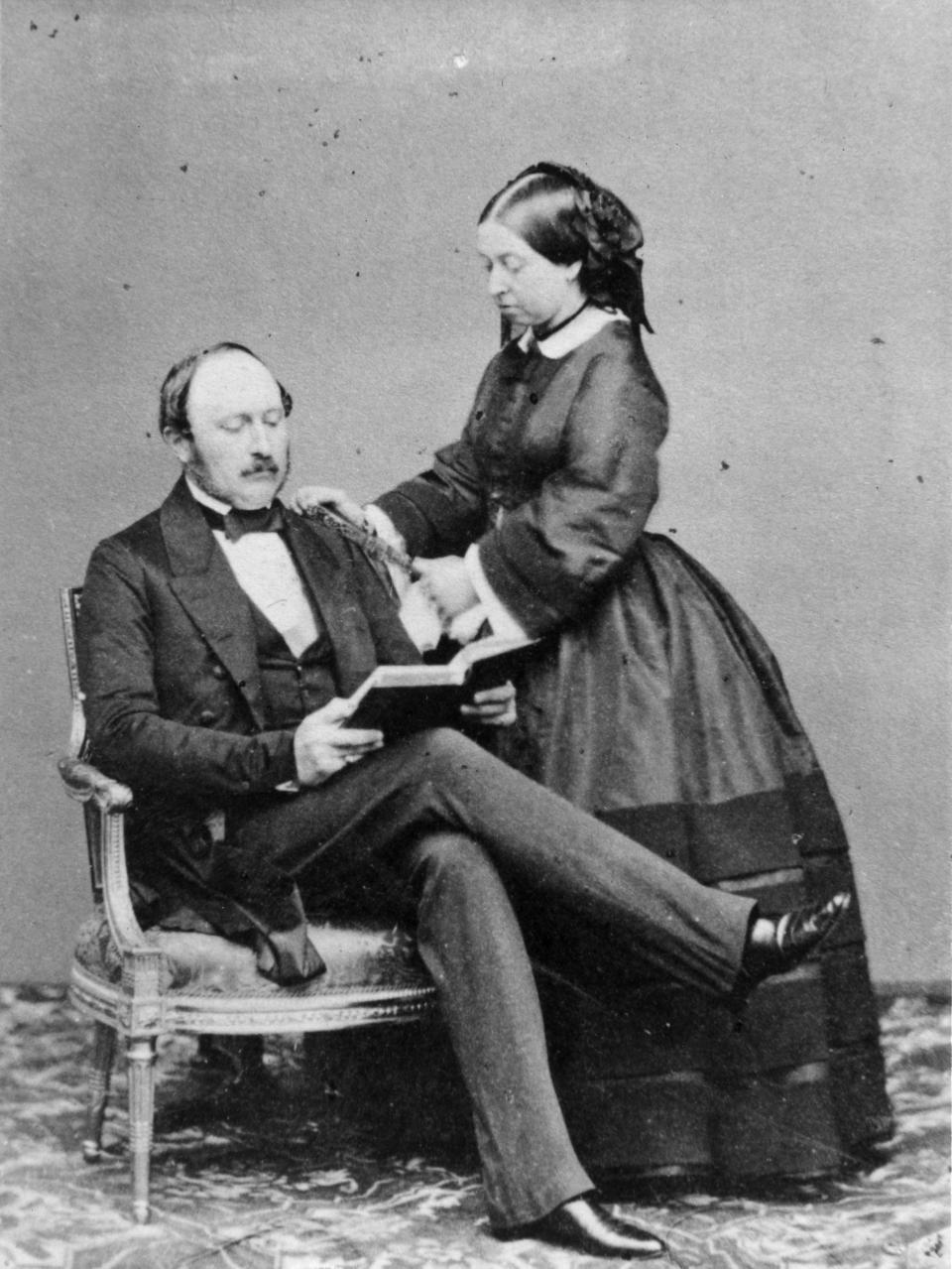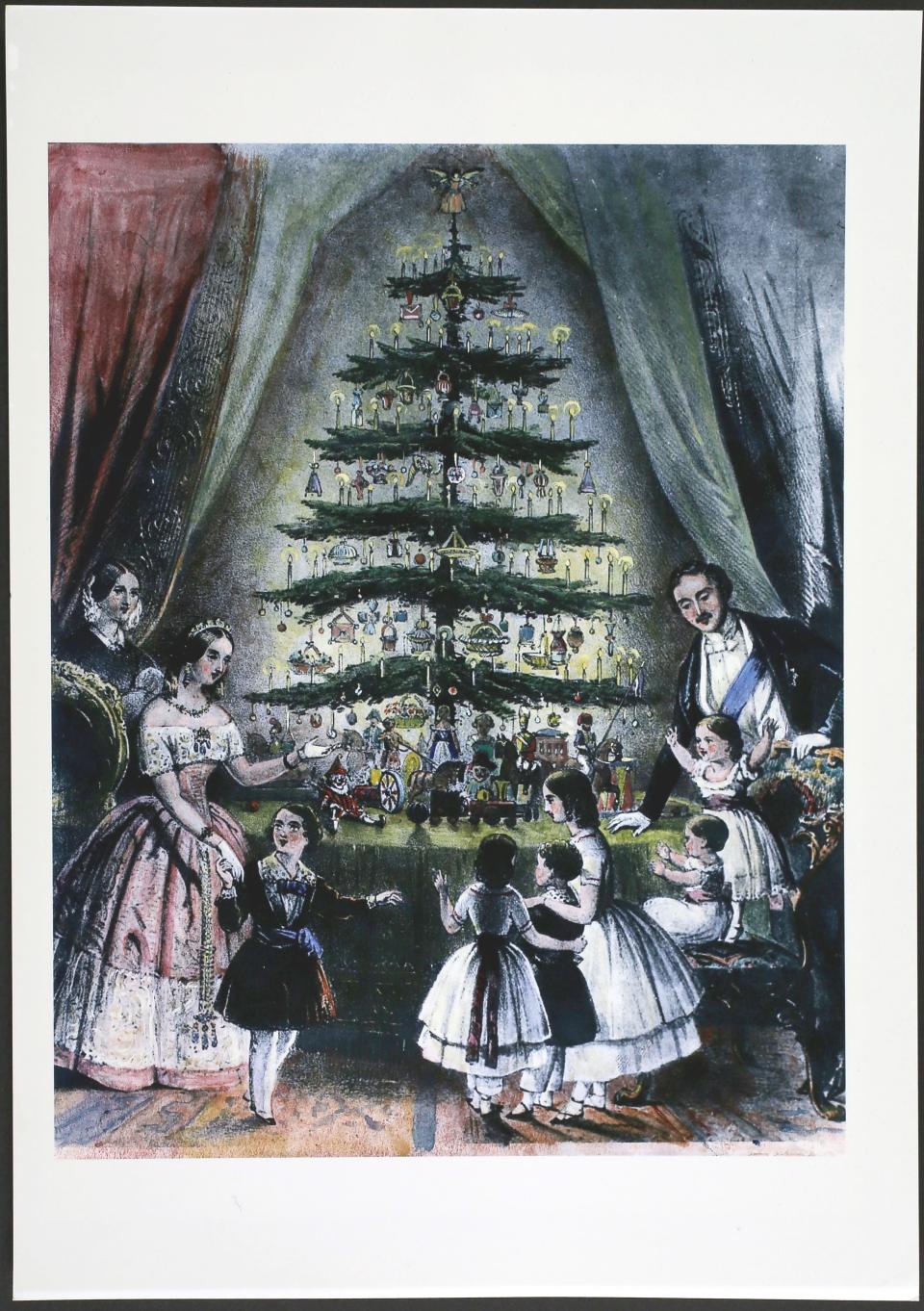How a 19th century royal wedding helped cement the Christmas tree as holiday tradition
You know them, you love them and every year you decorate them for Christmas.
The Christmas tree, whether artificial or real, has become a permanent fixture in the lives of many during the winter season in the United States and abroad for all sorts of reasons.
Evergreens have long been used by different cultures throughout the centuries to celebrate momentous occasions, like the winter, winter solstice, Christianity and the birth of Christ, National Christmas Tree Association spokesperson Jill Sidebottom shared with USA Today.
The tradition and subsequently the commercialization of Christmas trees also “trades heavily on nostalgia,” Forest History Society Historian Jamie Lewis said.
“I think that’s part of the reason why we keep doing this. For so many people, it is a connection to previous generations, to childhood memories they have or to a childhood they didn’t have but would have liked to have,” Lewis said.
Here’s how the Christmas tree became the center of such a well-recognized holiday.
When did the Christmas tree tradition arrive in the United States?
It took over 300 years for the “Christmas tree” tradition to be incorporated into the lives of American families. The first documented use of a tree occurred in a winter Christmas celebration occurred in Latvia in 1510, according to the New York Public Library.
The tree was decorated with artificial roses, ribbons and dried fruit. The tree was set on fire after the celebration was over.
In the 100 years following the first documented use of a tree, a German territory in France sold trees in a marketplace, German people began to decorate trees with apples and Evergreen tips were hung upside down from the ceiling in parts of Austria and Germany, according to the National Christmas Tree Association.
The custom of decorating a “pine or fir tree” over the holidays became popular in Germany and other parts of northern Europe by the 1700s but it wasn’t until the marriage of Queen Victoria to Prince Albert in 1840 that the practice “became more widely accepted and practiced throughout the British Isles,” the NYPL reported.

“Queen Victoria was an influencer before we even knew of that term," Lewis said. "This is one of those things that upper-class Americans pick up on the fact that she's doing this, helping popularize the practice. Her husband was German so I think he helped bring this to Britain.”
An indoor Christmas tree setup was likely brought to the U.S. by German settlers in the 1800s with tree sizes ranging “from tabletop size to floor-to-ceiling,” according to the Christmas Tree Association.
“We have a German population in the United States that have brought this tradition with them from the old country. There’s a point where the middle class has enough money to do this, they’ve got homes in which they can place trees in as well as other factors going on with the Industrial Revolution,” Lewis said.
Families nationwide began to incorporate Christmas trees after 1850, when a Philadelphia-based magazine republished the royal family’s Christmas scene from Illustrated London News, the world’s first illustrated weekly news magazine, according to National Geographic.

Christmas trees were sold commercially around the country by 1851. The trees initially sold were “taken at random from the forests,” the Christmas Tree Association wrote.
The White House got its first Christmas tree a couple years later, a feat credited to 14th U.S. President Franklin Pierce. Some of the most common decorations, including glass balls, chains of balls, toys and figures were introduced by the late 1800s.
First Christmas tree farm in U.S. appears in 1901
A company began to offer artificial trees as an option not long after that. The Evergreen supply began to dwindle by the 1900s “due to overharvesting,” according to the Christmas Tree Association.
W.V. McGalliard planted 25,000 Norway spruce trees on his farm in New Jersey, creating the first Christmas tree farm in 1901. Within the same year, President Theodore Roosevelt said he wanted to do away with the practice, citing “destruction of forests,” the association wrote.
He was convinced by those closest to him, family and U.S. Division of Forestry Chief that the practice could continue without harming the forest.
The Christmas tree later became the way the country ushered in the holiday, as the National Christmas Tree Association began the tradition of presenting a Christmas tree to the First Lady for display in the Blue Room of the White House in 1966.
The tradition has continued on at the White House, like many other celebrations around the country that place the Christmas tree front and center sometimes weeks or months before the winter season starts. Over the next couple of decades, individual states begin to have Christmas tree lightings or celebrations over their own for their residents.
Anywhere between 25 and 30 million natural Christmas trees are currently sold each year, according to the Christmas Tree Association.
What kind of decorations were Christmas trees initially decorated with?
A tangle of lights (colored or white), intricate ornaments (glass or plastic) and in some cases a tree topper have become some of the most common decorations to place on a Christmas trees in recent history, but there was a time when tree décor was a little less flashy.
Candles, wooden ornaments and small gifts became the way people decorated their trees by the middle part of the 19th century, according to the New York Public Library.
The style, or way of decorating trees was featured prominently in mainstream publications in addition to the holiday greeting cards, cementing the practice of decorating a tree as tradition, the library wrote.
The commercialization of the Christmas tree, decorations as well as other Christian imagery was integrated by the end of the century, according to the library.
The North Carolina Christmas Tree Association got its start in the late 1950s and Sidebottom, who started there, said she recalls when Christmas trees were put up a couple of days before the holiday.
“If you read a lot of literature from the 19th century and I am talking about a Christmas celebration, the tree is set up on Christmas Eve, decorated, then the kids come down the next day to be in the presence of the tree,” Sidebottom.
The commercialization of Christmas has stores and even customers thinking about Christmas by August, or at least by the time Halloween is over, Sidebottom said.
“It's sort of anything goes. So, now, a lot of people want to put up their tree either Thanksgiving weekend or even the weekend before Thanksgiving and that’s really pushing being able to keep that tree fresh until Christmas. Hopefully, it doesn’t get any earlier than that,” Sidebottom said.
More: 'Tis the season for holiday cards. Tips on writing a heartfelt note, what else to know
What are some things about Christmas trees I might not already know?
There might be a couple facts you have learned or already know about Christmas trees, but here are a couple more.
Calvin Coolidge, the 30th President of the U.S. lit the first National Christmas Tree at the White House on Christmas Eve 1923.
The top Christmas tree producing states are: Oregon, North Carolina, Michigan, Pennsylvania, Wisconsin and Washington.
December of 1933 was the year the Rockefeller Center in New York Decided to make their Christmas tree lighting ceremony an annual tradition.
Martin Luther has been credited with being the first to put lights (candles) on the Christmas tree after observing a starry sky on a late-night forest stroll, National Geographic reported.
This article originally appeared on USA TODAY: Why do we center festivities around the Christmas tree?

